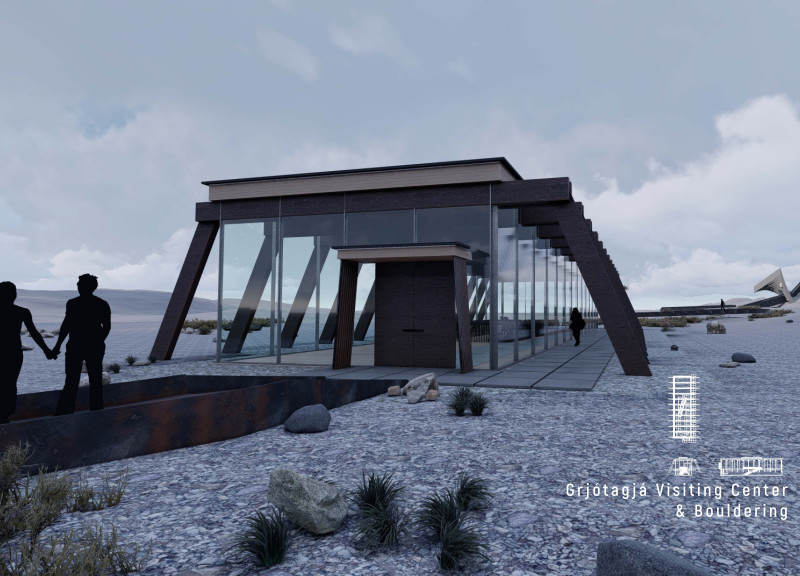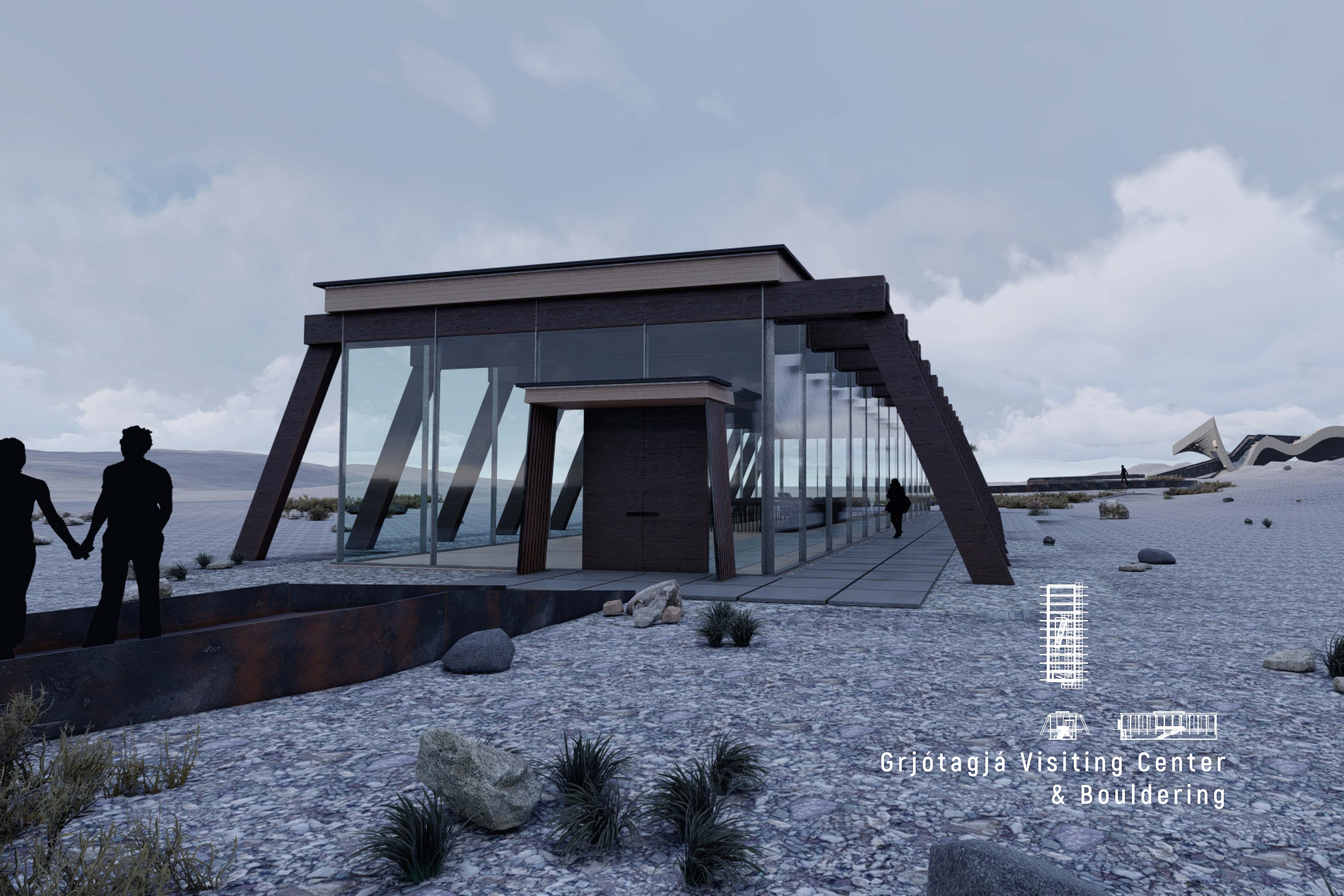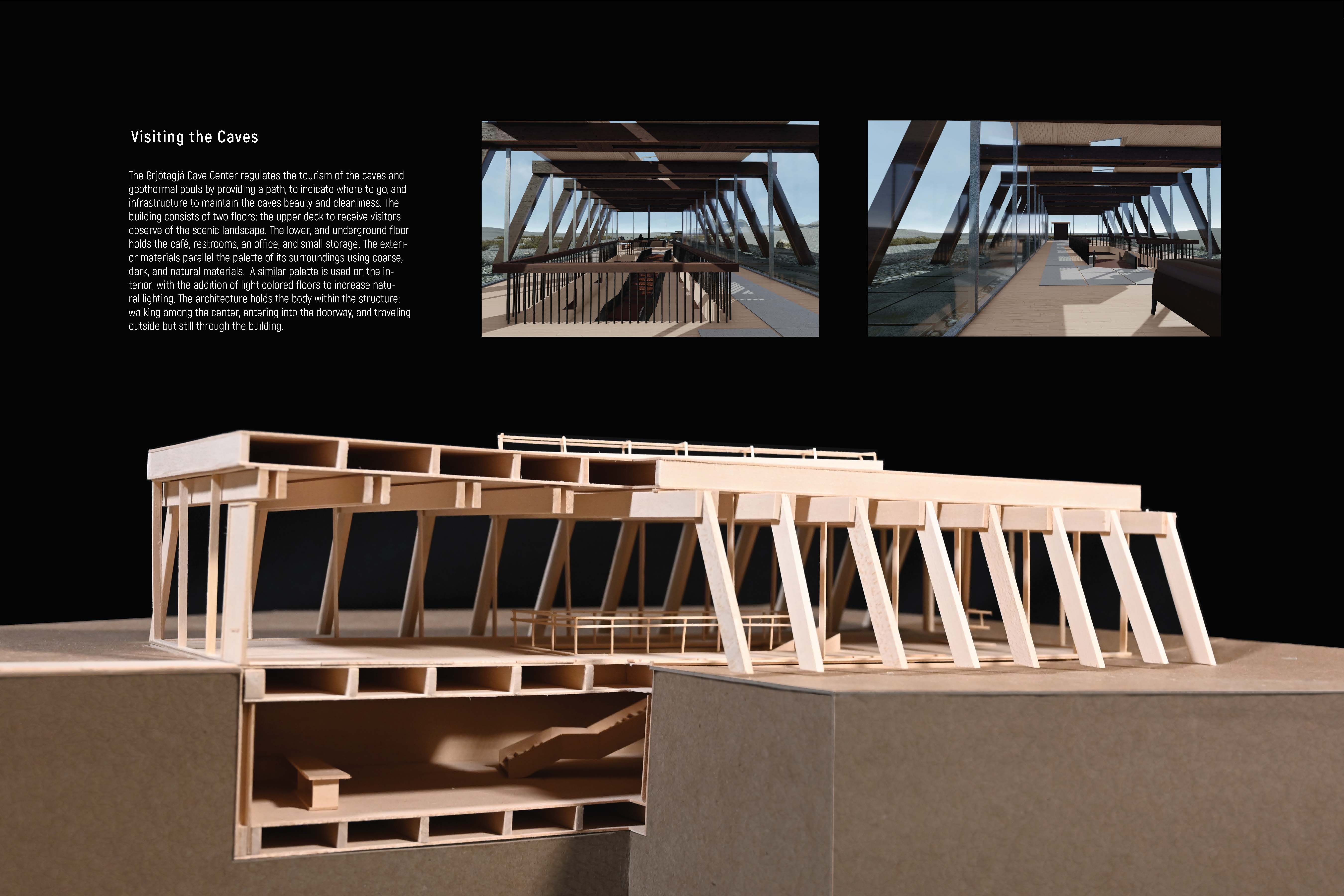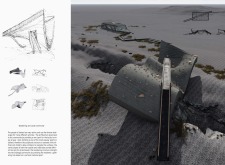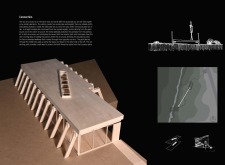5 key facts about this project
At its core, this architectural project represents a commitment to sustainability and an appreciation for the unique geological features of the region. It functions primarily as a visitor center, offering essential amenities such as a café and bouldering areas, while also providing vantage points for the stunning vistas that the site has to offer. This dual functionality encourages not only the enjoyment of outdoor activities but also a space for relaxation and social gathering. The design invites interaction, pairing leisure activities with the beauty of the landscape, thereby creating an immersive experience for guests.
Examining the important parts of the project reveals a careful and innovative design approach. The building features a tiered structure that mimics the contours of the terrain, reducing its impact on the environment while creating diverse spatial experiences. The upper levels are designated for observation and enjoyment of the picturesque surroundings, allowing visitors to engage with the natural beauty of Grjótagjá. The lower levels, on the other hand, cater to practical needs, housing services such as storage and refreshment areas that support both the bouldering activities and the general flow of visitors.
A significant characteristic of the design is its materiality, which speaks to the project's contextual relevance. The use of wood brings warmth to the structure, evoking a sense of connection with the natural world. Dark timber elements complement the rugged Icelandic landscape, while expansive glass façades offer unobstructed views and facilitate an abundance of natural light. Complementing these materials is robust concrete, used for foundational stability and durability against the harsh Icelandic climate, and steel, which adds structural integrity while providing visual contrast to the warmer wood tones.
The design philosophy behind the Grjótagjá Visiting Center is also evident in its emphasis on community engagement. The inclusion of a bouldering facility not only appeals to climbers and outdoor enthusiasts but also acts as a social hub for local residents. This focus on creating a multi-functional space is a unique aspect of the project, emphasizing that architecture can foster community ties while catering to a range of interests.
Moreover, the project is designed with an acute awareness of its geographic context. The variations in elevation, the interplay of light and shadow, and the panoramic views are all integral to the architectural experience. The building's orientation is deliberately aligned to take advantage of these natural elements, creating an environment where both visitors and locals can feel connected to the dramatic Icelandic landscape.
In summary, the Grjótagjá Visiting Center & Bouldering project stands as a well-considered example of modern architecture that respects its environment while serving practical needs. Its design reflects an understanding of sustainability, community, and the natural surroundings. For those interested in exploring the intricacies of this architectural endeavor, including the architectural plans, architectural sections, and architectural designs, further details are available that illuminate the thoughtful ideas behind this impressive project.


